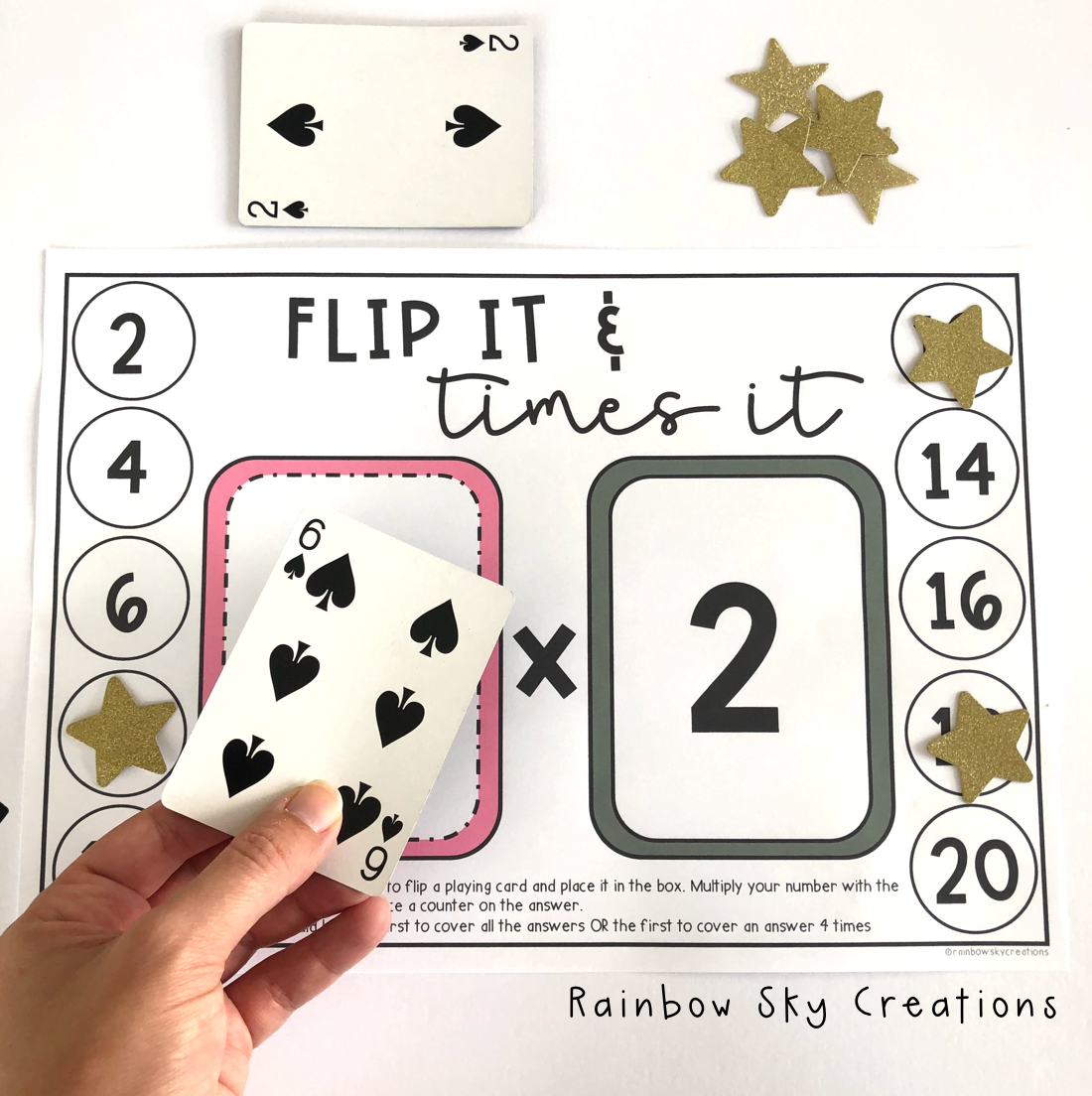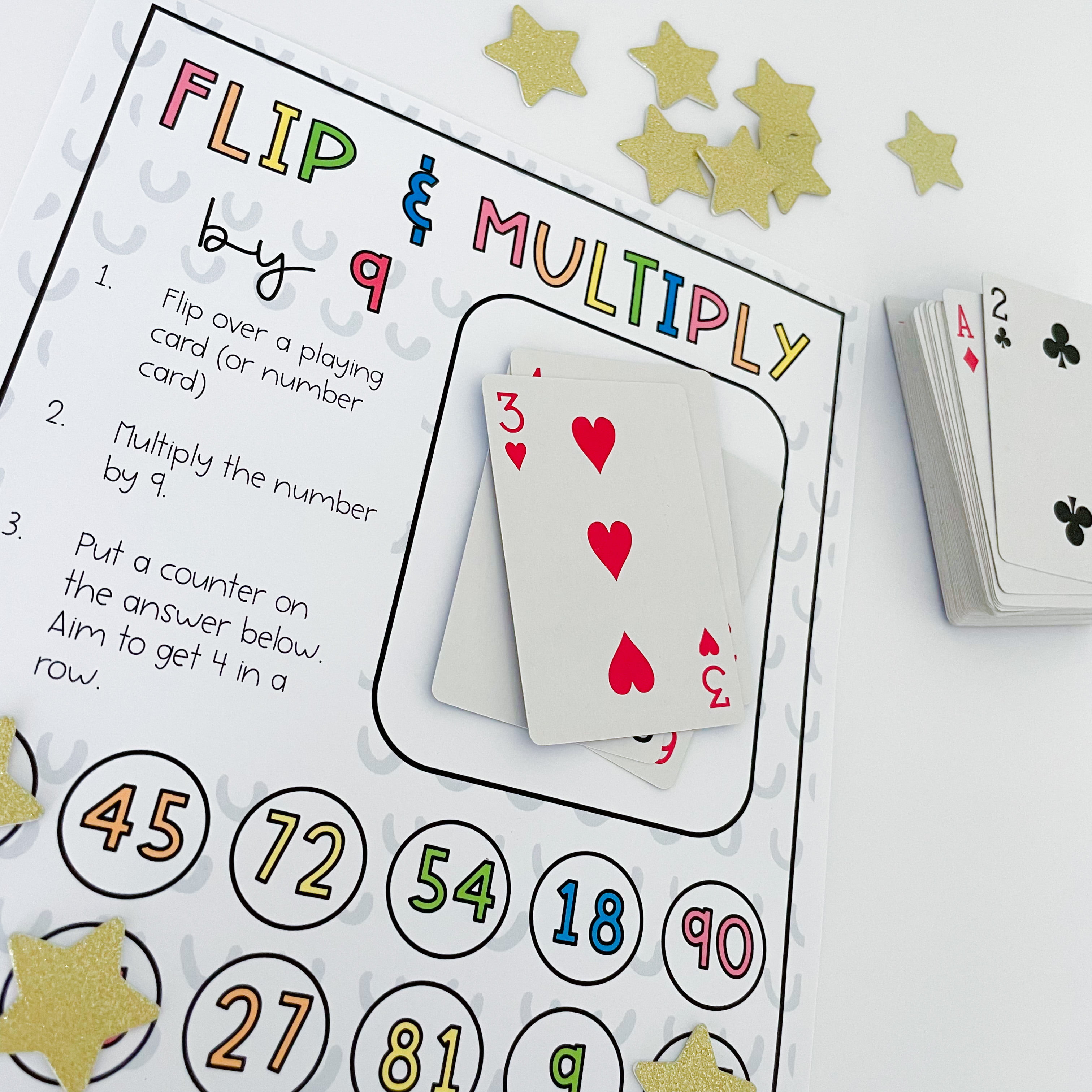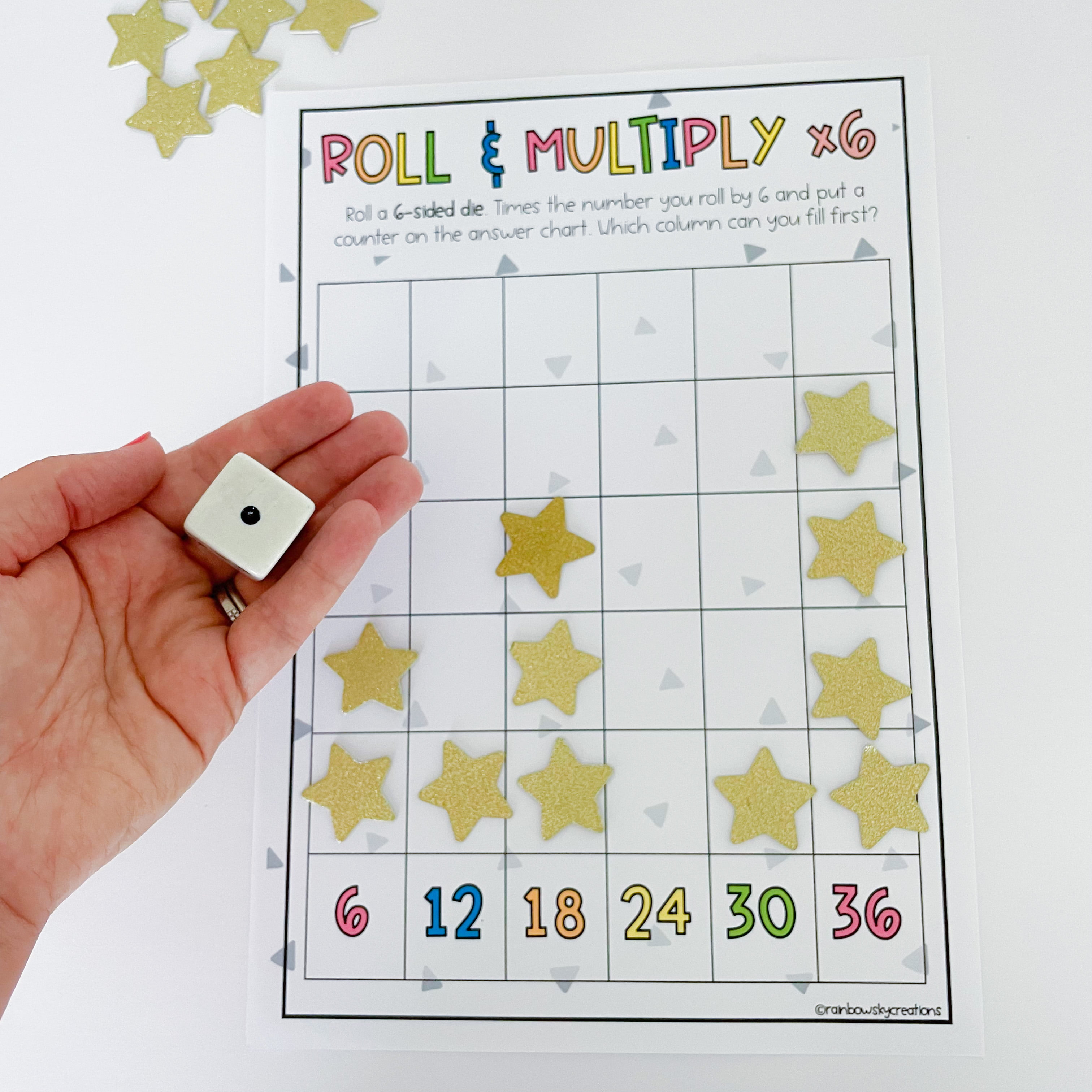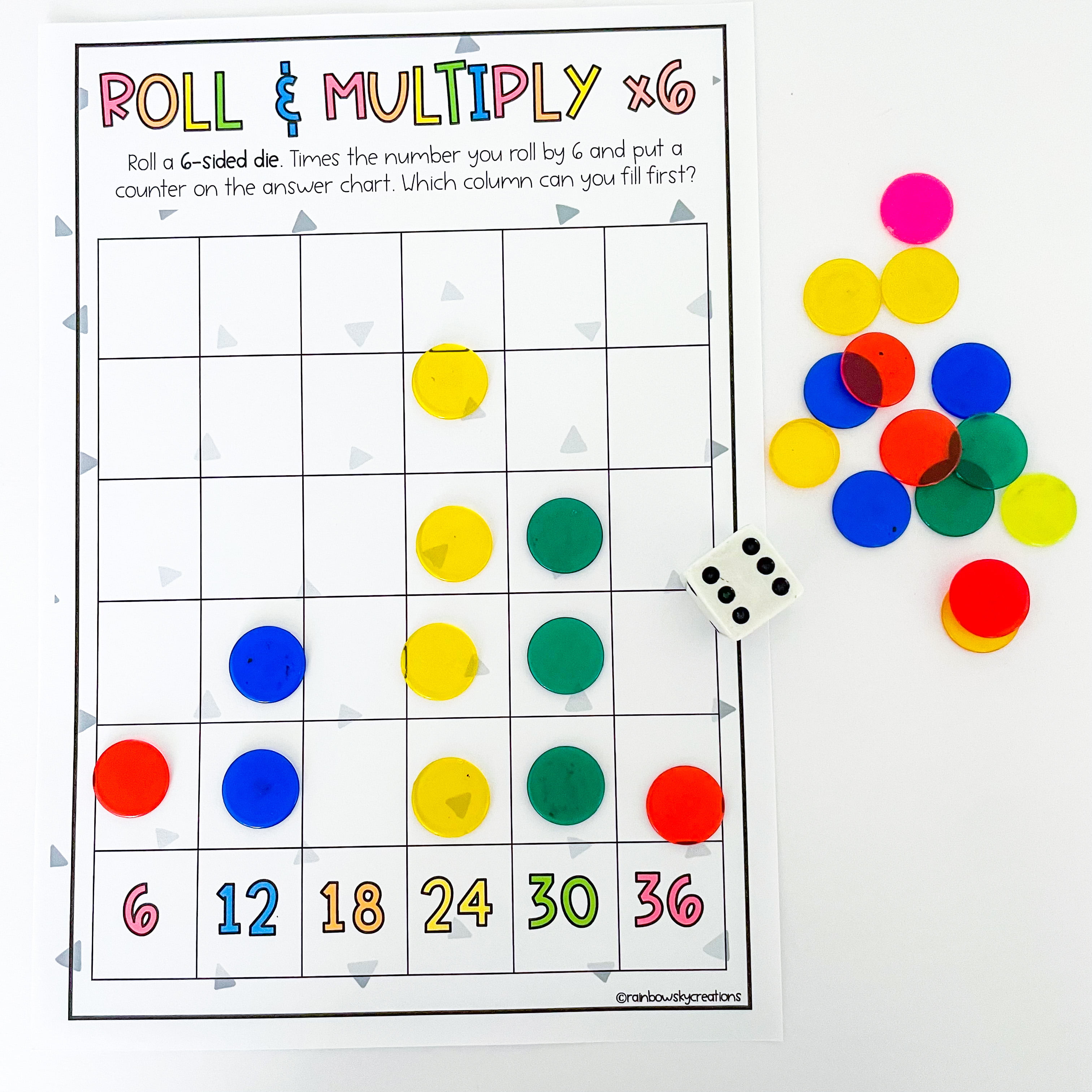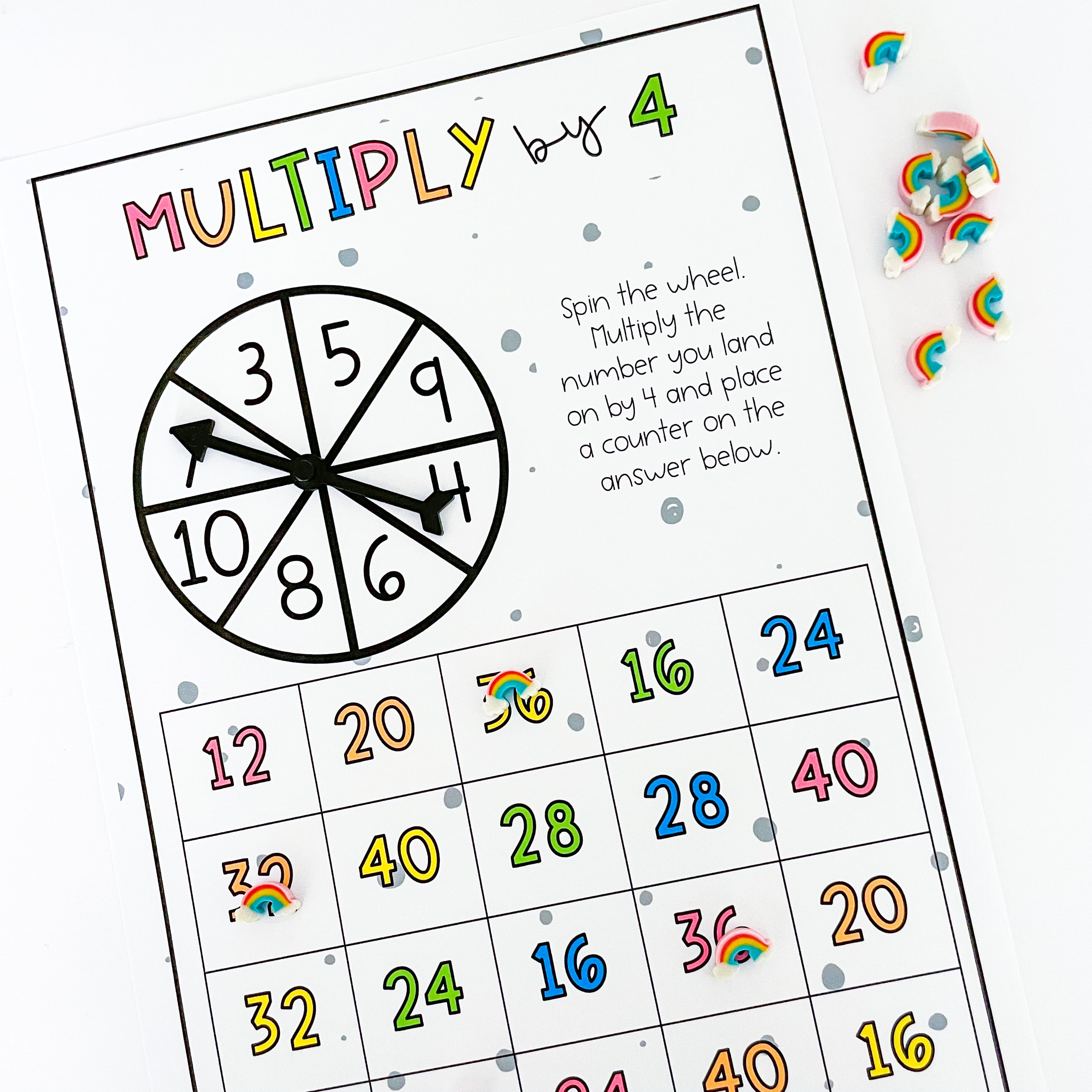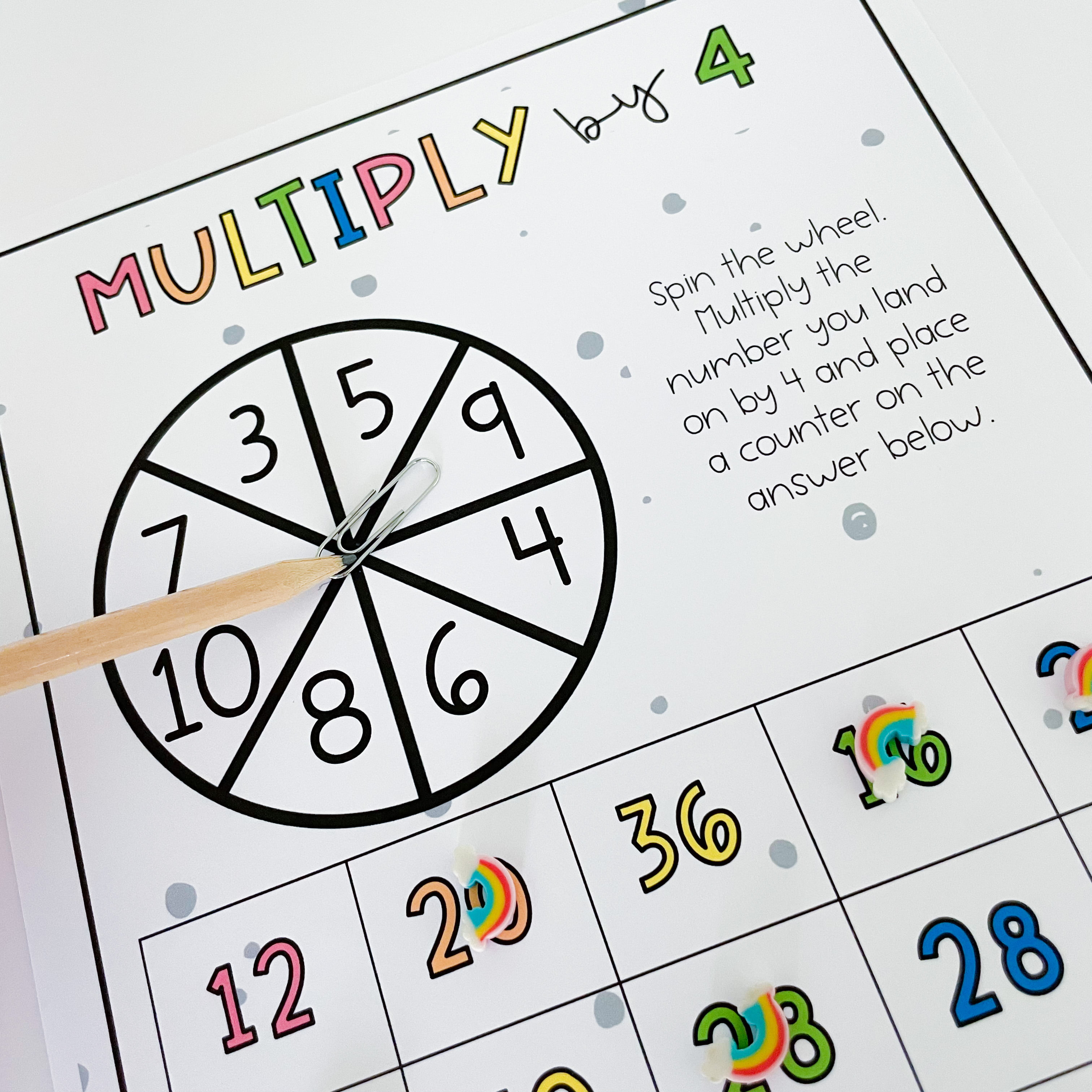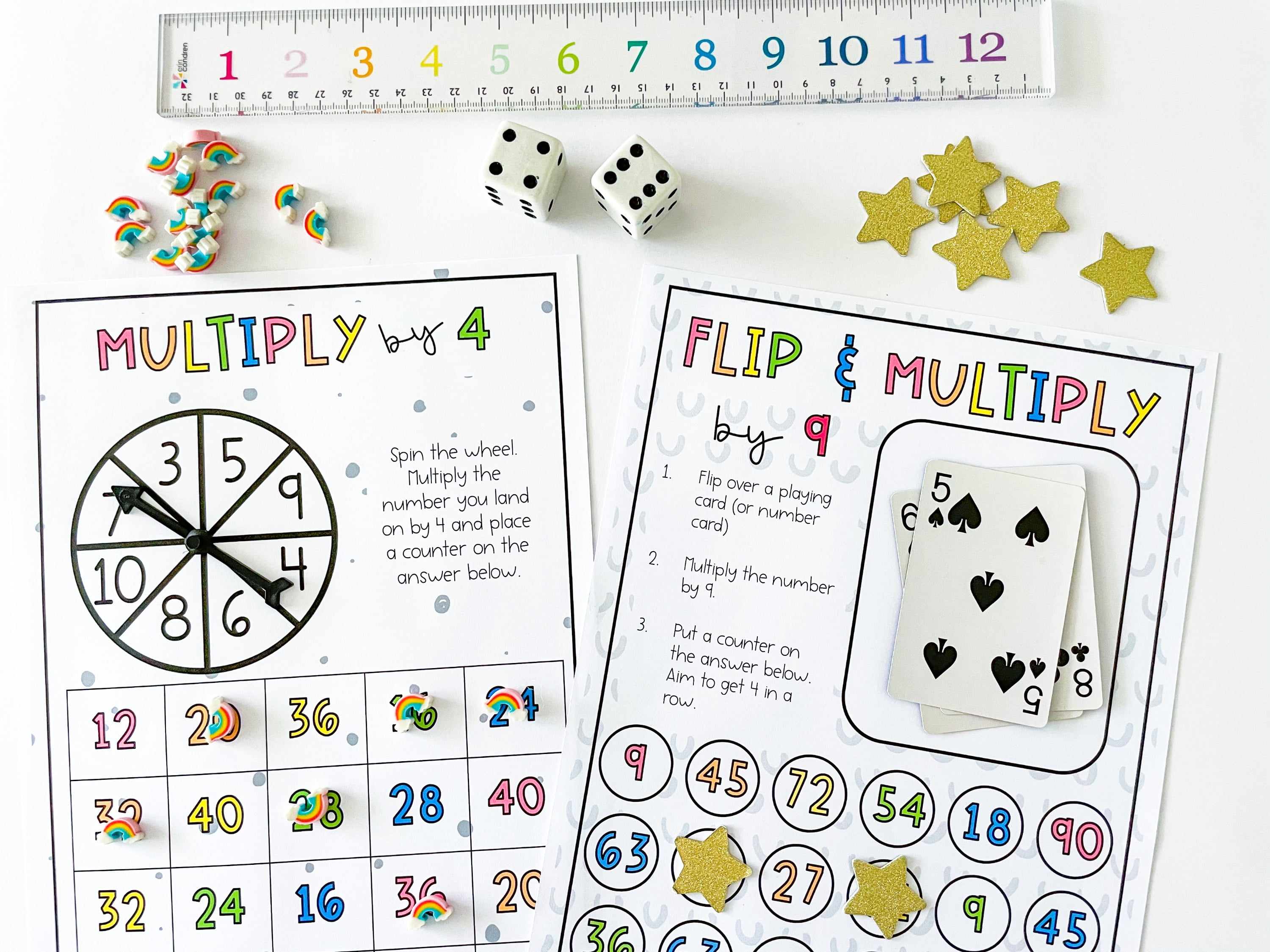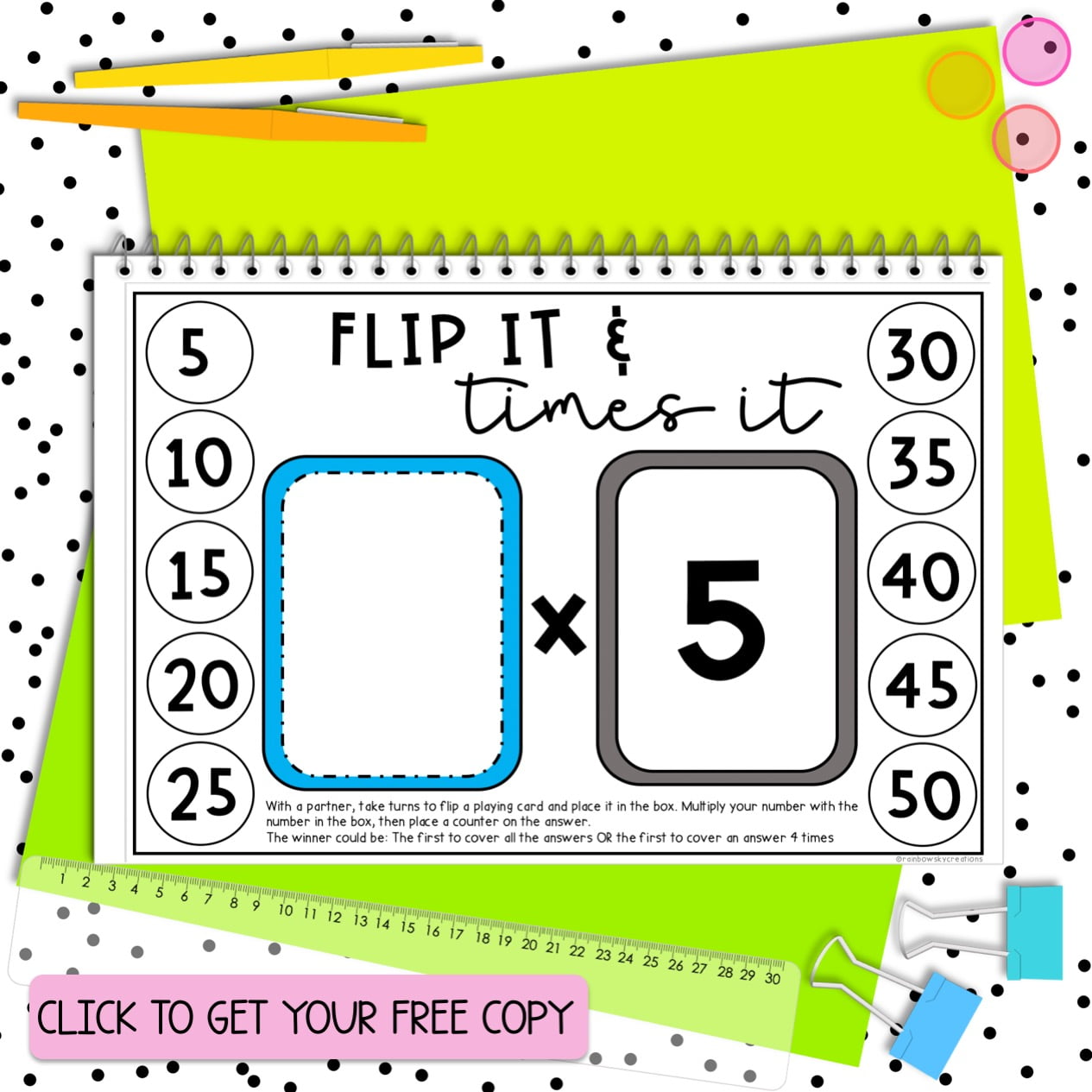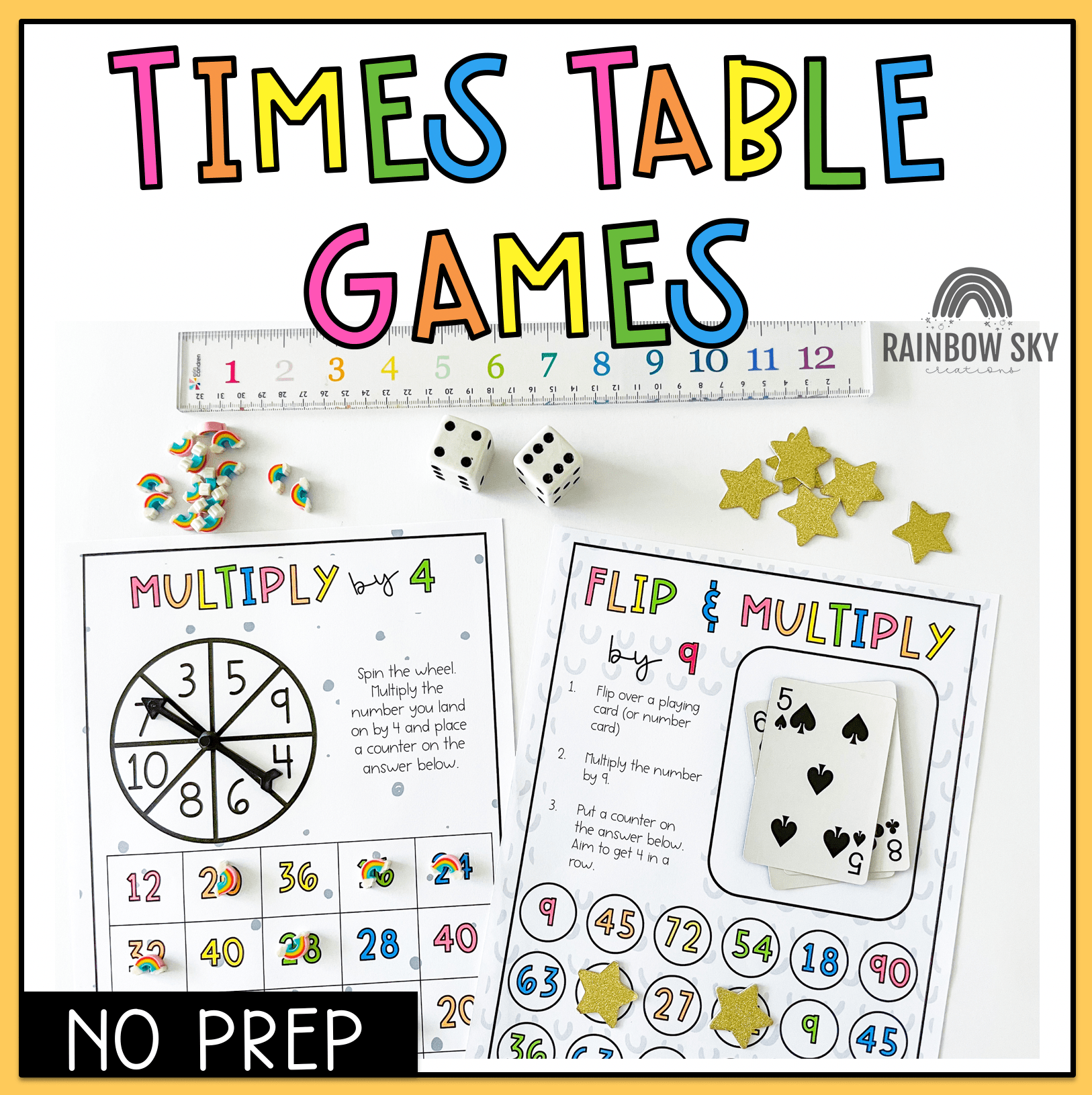Do you have students in your class that have trouble remembering times table facts? You are not alone, because over the years, time and time again we have seen middle primary aged students find multiplication facts a challenge.
So how can we help learners go from struggle street to a place where they are confident with multiplication facts, and can actually use the knowledge to help solve mathematical problems?
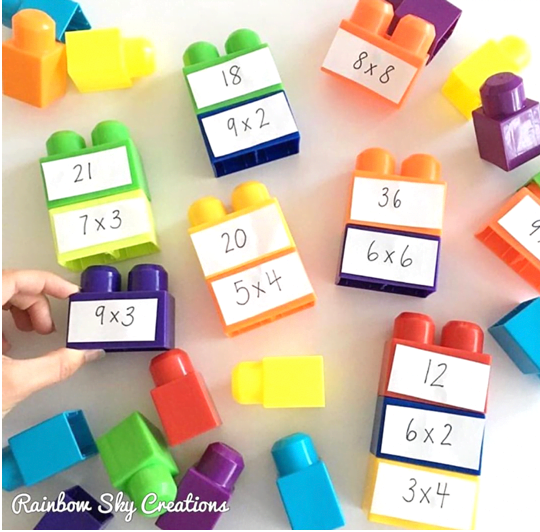
The answer is through fun and engaging lessons, activities and learning experiences. Spoiler alert: It doesn’t involve any chanting or old school times table songs.
Here are three simple games to play that involve no fancy resources. This is part 2 of a 3-part series all about helping students become fluent in times table facts. Check out part 1 here and Part 3 here.
1. Use playing cards
Every classroom seems to always have sets of playing cards lying around, which are ideal for times table fluency. Why? Because when you remove the picture cards you have the numbers 1 to 10 – perfect for multiplying!
You can use playing cards to randomly multiply two numbers together but we recommend this only once students are confident.
To begin, scaffold the task by asking students to lock in one number and then flip the second card and multiply. That way they are focusing on one set of facts at a time (a lot more efficient for their little brains when our goal is fluency). Plus, when students have success early on, it creates momentum, encouraging them to want to learn more multiplication facts.
Find this template for free here.
Using a template can provide an excellent scaffold for students and support independent learning, especially if running maths groups in the classroom. Additionally, templates are a wonderful addition to class resources if you want students to work in pairs or use as a fun homework activity.
2. Multiplication with dice
Dice are such a handy manipulative. Not only do they give kids the opportunity to work with hands-on materials, but by using 6-sided, 10 or 12 sided dice, you can provide a range of complexity depending on each student’s ability.
Students can easily roll two dice to generate multiplication number sentences or use a template like the one below to informally record answers.
We love using templates because it can also provide the opportunity for student discussion around chance or provide an additional component where students graph and compare their results.
3. Play spinner games
Kids love spinner games, which is why they are always on high rotation in our classrooms.
Spinner games provide a hands-on element while allowing for repeated practice (which we all know is one key factor in success when trying to remember number facts).
Differentiate spinner games by asking students to work individually, in pairs (using two different coloured counters), or give different templates depending on multiplication fluency. One student may be working on the 2 x table, while others are ready to tackle the 9s.
It is essential (for your sanity) to create easy systems to cater for the learners in the classroom. Thankfully, spinner games can do just that with ease!
Teacher tip: You can create a spinner by flicking a paperclip around a pencil. No fancy spinners are required!
See these games in action here on Instagram.
Other ways you can reuse these games:
We are all about reusing resources that we have gone to the trouble of printing and making in our classrooms because teacher time is so limited, and we know students enjoy the repetition when they enjoy a task.
Some ways you can reuse the games above include:
- Use resources as a fast finisher game
- Enlarge to A3, put on the whiteboard and play as a class (teacher vs students)
- Provide an opportunity for differentiated warmups by allowing students to choose a game they want more practice in for the first 5 minutes of your lesson
- Send home as a fun homework task (or ask your students to create their games)
- Have them as options for students to choose before school, during wet weather or inside lunchtime
- Intervention activities to support or extend students
As you can see, sometimes the simplest ideas can have the greatest impact. The best part is these games only require items you probably already have sitting in your classroom (dice, playing cards, counters, and paperclips) – too easy!
Don’t leave before you grab our FREE Multiplication fluency game. Pair these game templates with a deck of cards and your students are good to go with mastering multiplication facts!
